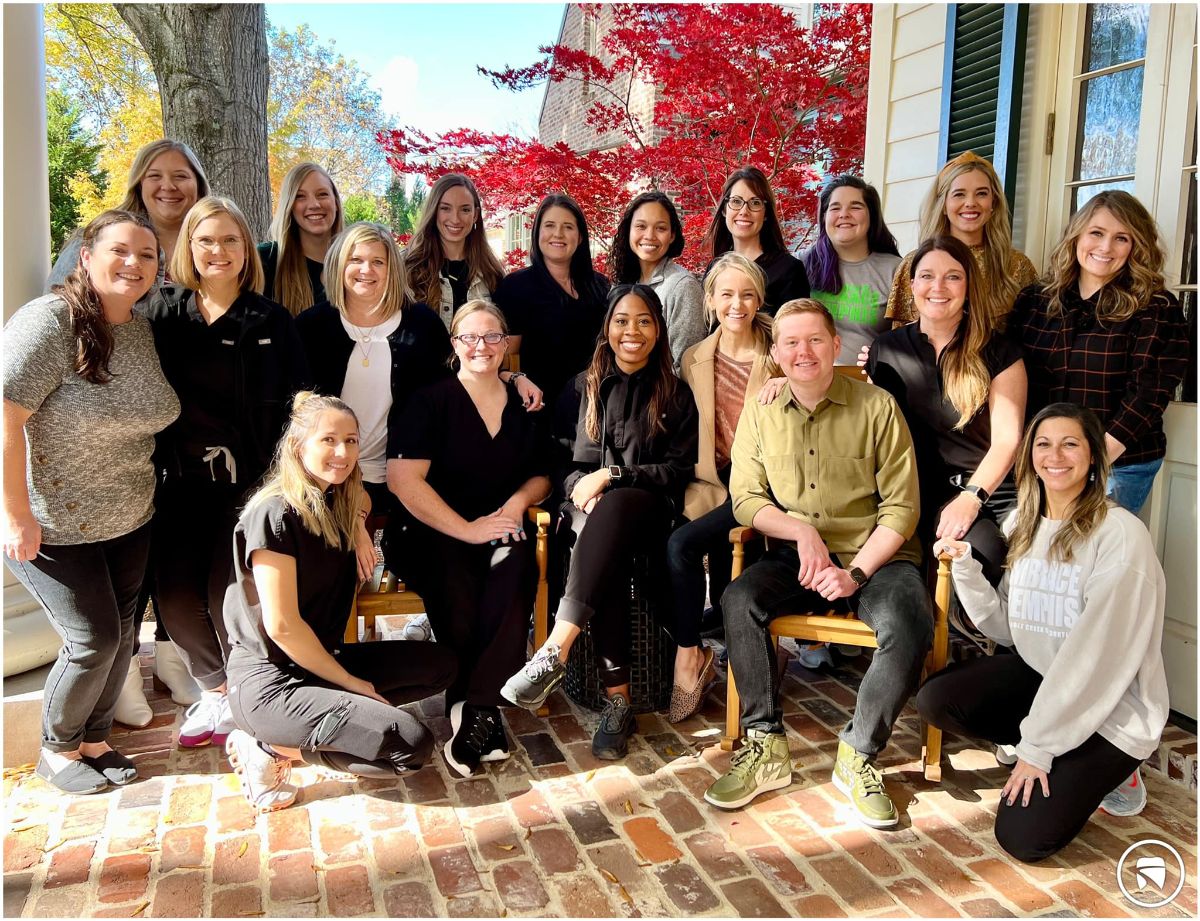Braces have come a long way over the years, but the main components have more or less stayed the same: brackets, wires, and bands. While this system is incredibly efficient for correcting bad bites, it can also attract food debris and bacteria. The way braces fit on your teeth further complicates things by making it difficult to clean around all the nooks and crannies they create.
Even though oral hygiene comes with a learning curve when you wear braces, it’s an essential part of the treatment process! Keeping your teeth and gums healthy is your #1 job as a patient here at Saddle Creek Orthodontics. We’re all about making your orthodontic journey as stress-free as possible, so let’s take a look at some of our best tips for brushing (and flossing) with braces!
Brush as often as you can
Did you know that plaque can form on your teeth and begin causing problems in as little as 48 hours? This sticky film is made up of residual food, saliva, and lots of bacteria. When it attaches to your braces and teeth, it may result in cavities, swollen gums, bad breath, and staining. Everyone should be brushing their teeth in the morning and again at night, but if you’re wearing braces, try to brush after every meal or snack, too. If you’re not able to brush right after eating, rinse your mouth thoroughly with water instead. This will help flush out any lingering food debris until you can get home and brush properly!
Choose the best toothbrush for braces
While there’s no particular type of toothbrush you need to use with braces, you should always choose one that has soft bristles. These will be easy on your braces and your teeth, which is helpful since brackets can put stress on them. A soft-bristled brush will help reduce additional wear and tear on your teeth and won’t harm the brackets or wire. A toothbrush with an orthodontic head can also be handy. Unlike the flat surface of most brushes, an orthodontic head contains a nook in the bristles that can get around the brackets and reach the teeth more effectively. Electric toothbrushes are another great option for the extra power they provide in removing stubborn food particles and plaque.
Pick a toothpaste that contains fluoride
You can choose whatever brand and flavor of toothpaste you like when you wear braces, but be sure it includes fluoride. This will help strengthen your tooth enamel so that it’s more resistant to decay. The right product can also minimize some of the acid erosion caused by certain foods and drinks. Even if you have fluoridated water where you live, you should still use a fluoride toothpaste during treatment. This will make a big difference to the overall health of your smile, both now andin the future!

The most effective method for brushing with braces
Angles are key when brushing with braces! Holding the brush at a 45-degree angle will help you clean above and below the wire, as well as flush out food debris that may be trapped under the brackets and gum tissue. This can take some practice, as it is probably a bit different from how you brushed before braces. You’ll need time to adjust and learn how to navigate around the brackets and wires. These recommendations can help you get your routine down pat!
- Hold the toothbrush against the front sides of the teeth at the aforementioned 45-degree angle. Move the toothbrush in small circular motions. Try to follow the regular curve of the gums and teeth as you go from tooth to tooth.
- Carefully brush each tooth for several seconds. Don’t rush it! Make sure all food particles are reached and removed along the gum line, between the braces, and on the surface of each tooth.
- Take care to brush the biting surfaces of the teeth, the back sides of the teeth, and behind the molars.
- Brush the roof of your mouth and tongue before rinsing for extra fresh breath!
- Keep brackets clean by angling the brush head against them as you brush. Remember to brush thoroughly under the wires as well.
Take flossing seriously
Flossing is a pretty big deal when you have braces. It’s easy for food to lodge itself in all those tiny crevices that wires and brackets create, and as you know, this can lead to dental issues! It may seem odd at first, but many experts believe flossing before brushing is the most efficient way to remove dental plaque. This is because it can help increase the amount of fluoride your teeth soak up from the toothpaste, strengthening them and boosting their resistance to decay.
Whether you do it before or after brushing, you need to floss at least once a day to remove plaque and debris that brushing alone can leave behind. As far as technique goes, you’ll need to ensure you’re flossing under the archwire of your braces as well as in between your teeth. Floss threaders are a helpful tool that can make this process much easier! Each threader has a stiff end that allows you to floss between the brackets and under the archwire more easily. You can also try following these simple steps to really get your teeth clean.
- Slide a piece of floss about 18 inches long under the wire, above the space between the two teeth. Insert the floss halfway through, then hold both ends of the floss.
- Carefully slide the floss up and down a few times between the teeth. You should hear a slight squeak when the space is clean.
- Floss the gum line with the floss in the shape of a “C” and below the gum line with a soft up and down motion. Try not to apply too much pressure when flossing around the archwire.
- Gently remove the floss and thread it under the next wire. Repeat the steps above.
- Interdental brushes and water flossers can also help dislodge plaque and flush out food debris.
It will take some time to perfect this practice, but keep at it! A little effort will go a long way towards a healthy mouth. If you’re struggling with flossing in and around your braces, let us know at your next appointment and we’ll be happy to give you a demonstration!
Add mouthwash to your oral hygiene routine
You shouldn’t use mouthwash as a replacement for brushing or flossing, but it canbe an excellent addition to your oral hygiene routine. Fluoride rinses can be especially effective as they strengthen the enamel and can help prevent white staining on your teeth. Mouthwash can also get to areas of your mouth that a toothbrush and floss may not be able to reach, like the gums and other soft tissues. Those that contain an ingredient called Cetylpyridinium Chloride (CPC) will kill germs, too, protecting your mouth from plaque and gingivitis in the process.
Do you have a hard time with gingivitis, periodontal disease, or dry mouth? These rinses may be your new best friend! Cosmetic rinses can temporarily improve your breath and create a pleasant taste in your mouth. They won’t kill the bacteria that cause bad breath, though. That’s where therapeutic mouthwashes come in! These go head to head with oral bacteria and introduce healthy nutrients into the mouth. Feel free to ask about mouthwashes designed for use with braces at your next appointment!

Trust Saddle Creek Orthodontics to help you care for your smile
Braces can introduce extra factors into your dental hygiene routine that make it more difficult to clean your teeth effectively. We hope that the tips and tricks we’ve outlined here will help simplify this process for you!
Maintaining a healthy smile is one of the easiest ways to achieve the best results as an orthodontic patient. Remember that our expert team is always here and ready to help if you have any questions or concerns about dental hygiene during treatment!
Are you interested in learning how to be more proactive with your oral health? Do you want to explore how orthodontics can transform your smile? Get in touch with us today to schedule a FREE consultation or follow-up appointment with Dr. Fagala at our Germantown or Collierville office!
